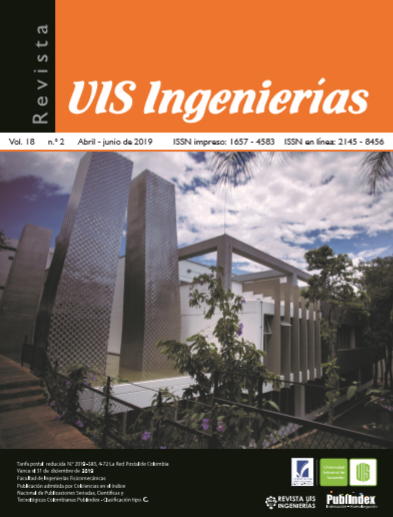Published 2019-03-04
Keywords
- antagonistic fungi,
- biological control,
- biopesticides
How to Cite
Abstract
The objective of this study was to evaluate the antagonistic effects of two native isolates of Trichoderma asperellum (GRB-HA1 and GRB-HA2) against the phytopathogenic fungi Colletotrichum gloeosporioides, Curvularia lunata, and Fusarium oxysporum, with the aim of developing biological control agents to replace the use of chemical fungicides. An antagonism assay was performed under in vitro conditions using the dual culture method, and the percentage inhibition of radial growth (PIRG) and the degree of mycoparasitism (grade 0–4) were evaluated after 10 days of culture. Results show that both isolates resulted in 100% PIRG and grade 4 mycoparasitism in dual cultures against Colletotrichum gloeosporioides and Curvularia lunata although GRB-HA1 led to 70% PIRG and grade 3 mycoparasitism and GRB-HA2 led to 84% PIRG and grade four mycoparasitism against F. oxysporum. Thus, these native T. asperellum isolates show potential for the biological control of diseases caused by phytophathogenic fungi.
Downloads
References
“Deterioro poscosecha de las frutas y Hortalizas frescas por hongos y bacterias,” FHIA informa, San Pedro Sula, Cortés, Hond., Dic. 2007 [En línea]. Disponible en: http://www.fhia.org.hn/ dowloads/fhia_ informa/fhiainfdic2007.pdf
J. Gonzáles-Cardenas, J. Maruri-Carcía, A. Gonzáles-Acosta, “Evaluación de diferentes concentraciones de Trichoderma asperillum contra Fusarium oxysporum agente causal de pudrición de plántulas en papaya (Carica papaya L.) En Tuxpan, Veracruz, México,” Rev. UDO Agrícola, vol. 5, pp. 45-47, 2005.
C. Suárez, R. Fernández, N. Valero, R. Gámez, A. Páez, “Antagonismo in vitro de Trichoderma harzianum Rifai sobre Fusarium solani (Mart.) Sacc., asociado a la marchitex en maracuyá”, Rev. Colombiana de Biotecnología, vol. 10, no. 2, pp. 35-43, 2008. doi: 10.15446/rev.colomb.biote
W, Flores-Bazauri, J. Chico-Ruíz, L. Cerna-Rebaza, “Actividad antagónica in vitro de Clonostachys rosea sobre Fusarium axysporum, Alternaria solani y Botrytis cinerea”, Rev. REBIOL, vol. 35, no. 1, pp. 34-42, 2015.
E. S. R., J. M. G., and N. M., “La Infección de Colletotrichum gloeosporioides (Penz.) Penz. y Sacc. en Aguacatero (Persea americana Mill.): Aspectos Bioquímicos y Genéticos,” Rev. Mex. Fitopatol., vol. 27, no. 1, pp. 53–63, 2009.
L. Machado, S. Matsumoto, G. Cuzzuol, L. Oliveira, “Influence of laboratory cultivation on species of Rhodophyta physiological evaluations and antifungal activity against phytopathogens”, Rev. Cienc. Agron., vol. 45, no. 1, pp. 52-61, 2014.
F. Varón, G. Sarria, Enfermedades del maíz y su manejo. Palmira: ICA Fenalce, 2007.
D. Sardinha, D. Silva et al., “Fungos e nematóides fitopatogênicos associados ao cultivo de flores tropicais em São Luís – MA”, Summa Phytopathologica, vol. 38, no. 2, pp. 159-162, 2012. doi: 10.1590/S0100-54052012000200010.
R. Sneha, K. Satya-Prasad, “Antagonistic activity of Trichoderma aureoviride against Fusarium solani and Curvularia clavata,” Journ. Of Intern. Acad. Res. For Multidisciplinary, vol. 2, no. 10, pp. 422-427, 2014.
G. C. Papavizas, “Trichoderma and Gliocladium: Biology, Ecology, and Potential for Biocontrol,” Annu. Rev. Phytopathol., vol. 23, no. 1, pp. 23–54, 1985.
M. H. Badii, J.L. Abreu, “Control biológico una forma sustentable de control de plagas”, Daena, vol 1, pp. 82-90, 2006.
M. Verma, S. K. Brar, R. D. Tyagi, R. Y. Surampalli, and J. R. Valéro, “Antagonistic fungi, Trichoderma spp.: Panoply of biological control,” Biochem. Eng. J., vol. 37, no. 1, pp. 1–20, 2007.
G. E. Harman, “Overview of Mechanisms and Uses of Trichoderma spp.,” Phytopathology, vol. 96, no. 2, pp. 190–194, Feb. 2006. doi: 10.1094/PHYTO-96-0190
F. Matarese, S. Sarrocco, S. Gruber, V. Seidl-Seiboth, and G. Vannacci, “Biocontrol of Fusarium head blight: interactions between Trichoderma and mycotoxigenic Fusarium,” Microbiology, vol. 158, no. 1, pp. 98–106, 2012. doi: 10.1099/mic.0.052639-0
B. Martínez, Y. Obret, S. Pérez, Y. Reyes, “Antagonismo in vitro de cepas de Trichoderma asperellum frente a Sarocladium oryzae (Sawada) W. Gams & D. Hawksworth.” Rev. Protección Veg., vol.29, no. 2, pp. 106-111, 2014.
V. Gaviria-Hernández, L. F. Patiño-Hoyos, y A. Saldarriaga-Cardona, “Evaluación in vitro de fungicidas comerciales para el control de Colletotrichum spp., en mora de castill,” RCTA, vol. 14, no. 1, pp. 67-75, 2013.
M.T. Aktar, K.S. Hossain, M.A. Bashar, “Antagonistic potential of rhizosphere fungi against leaf spot and fruit rot pathogens brinjal,” Bangladesh Journ. of Botany, vol. 43, no. 2, pp. 213-217, 2014.
B. K. Mishra, R. K. Mishra, R. C. Mishra, A. K. Tiwari, R. S. Yadav, and A. Dikshit, “Biocontrol efficacy of Trichoderma viride isolates against fungal plant pathogens causing disease in Vigna radiata L,” Arch. Appl. Sci. Res., vol. 3, no. 2, pp. 361–369, 2011.
J. A. O., S. A. O., J. O., and J. P. K., “Assessment of trichoderma isolates for virulence efficacy on fusarium oxysporum f. sp. phaseoli,” Trop. Subtrop. Agroecosystems, vol. 13, pp. 99–107, 2011.
T. G. Kim and G. R. Knudsen, “Relationship between the biocontrol fungus Trichoderma harzianum and the phytopathogenic fungus Fusarium solani f.sp. pisi,” Appl. Soil Ecol., vol. 68, pp. 57–60, 2013.
N. J. Fokkema, “Fungal antagonisms in the phyllosphere,” Ann. Appl. Biol., vol. 89, no. 1, pp. 115–119. doi: 10.1111/j.1744-7348.1978.tb02582.x
L. Korsten, E. S. De Jager, E. E. De Villiers, “Evaluation of bacterial epiphytes isolated from avocado leaf and fruit surfaces for biocontrol of avocado postharvest diseases,” Plant Disease, vol. 79, n.° 11, pp. 1149-1156, 1995.
S. A. Wani et al., “Incidence of Fusarium wilt of chilli (Capsicum annum L.) in Kashmir valley and its management by Trichoderma spp,” MYCOPATH, vol. 12, no. 1, pp. 1–8, 2014.

